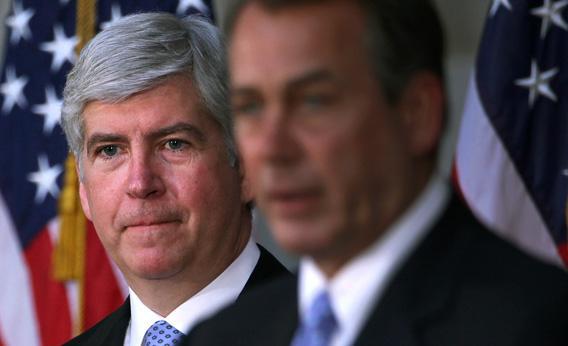The numbers are flying fast and furious about the Right To Work bill signed in Michigan this week. Consider this claim from Fox News:
As of October, the average unemployment rate in right-to-work states is 6.9 percent but 7.6 percent unemployment in non-right-to-work states. The national rate for that month: 7.9 percent.
These are, of course, impossible numbers. Somehow 23 states have an average unemployment rate of 6.9 percent and 27 states have an average rate of 7.6 percent, but the national average is higher than either—7.9 percent? Of course, Fox doesn’t explain how they got to those numbers—numbers that anybody can see just don’t make sense.
But if you do the hard work and look at the raw data, it seems they made the rookie mistake of averaging the state percentages without accounting for the different sizes of the states involved. Which just goes to show you how careful you have to be in understanding the numbers you’re using.
When you accurately study those numbers, you do find that non-right-to-work states do have slightly higher unemployment rates than states with right-to-work laws. The real question here is that of causation—or lack thereof. Any reasonable economist will tell you that it’s nearly impossible to isolate the impact of right-to-work laws on a state’s job growth. A multitude of other factors intervene. However, one thing the numbers can show is that right-to-work laws have a negative effect on the wages of workers in that state.
According to the Economic Policy Institute, wages for full-time, full-year union and nonunion workers in right-to-work states are about $1,500 less annually than for similar workers in non-right-to-work states.
